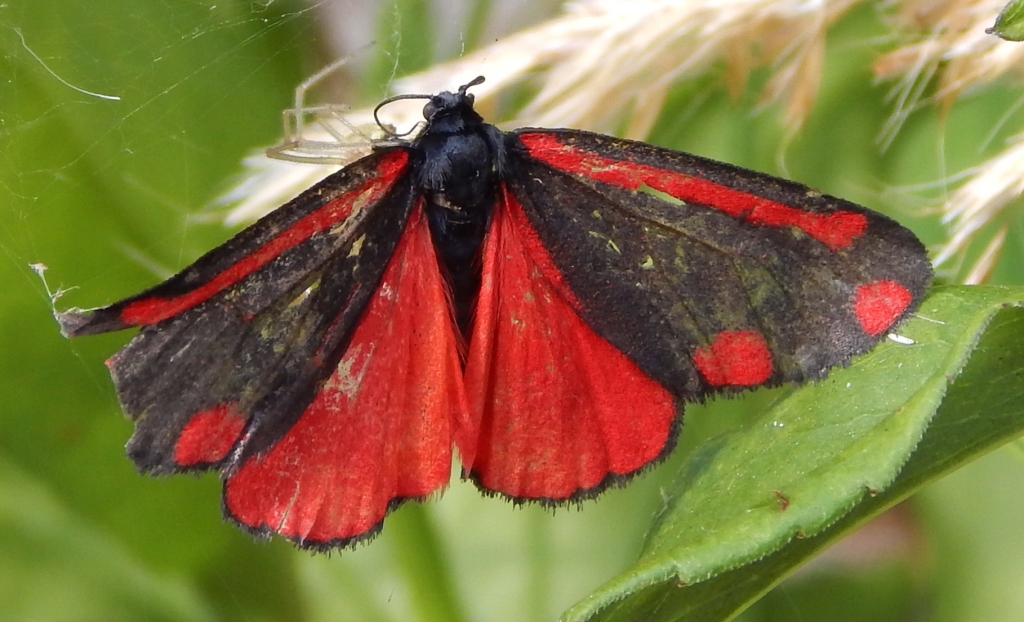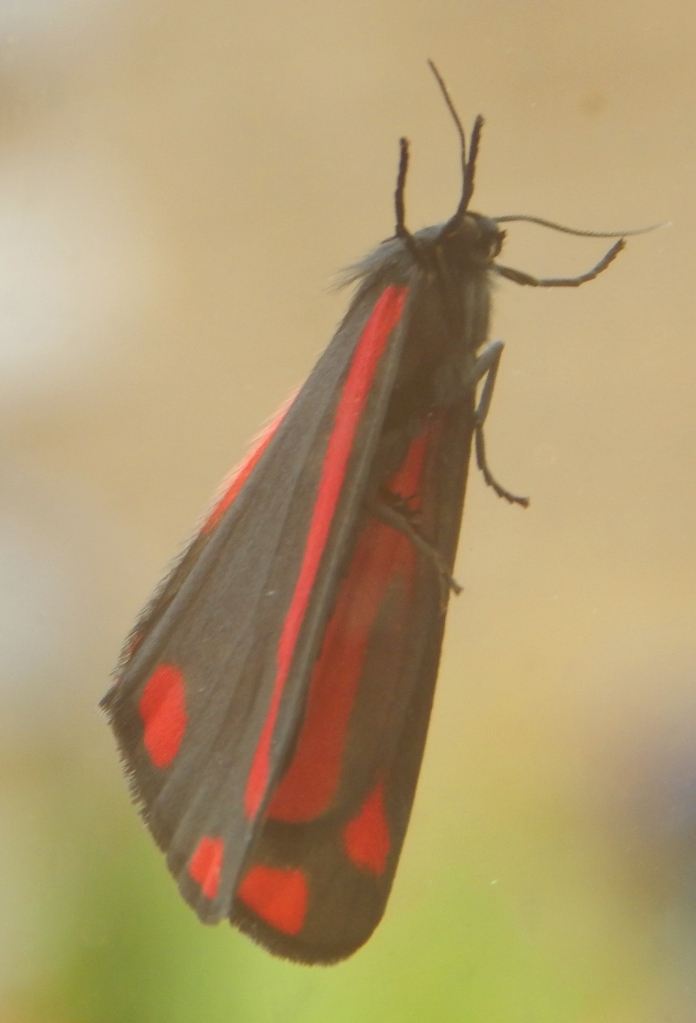
[350] Tyria jacobaea, Cinnabar
Introduction
Tyria jacobaeae, the Cinnabar Moth, is a colourful day-flying moth which comes from a colourful caterpillar that feeds on [187] Ragwort.
It can be called just a Cinnabar.
Taxonomy
Kingdom – Animals
Phylum – Arthropods
Class – Insects
Order – Lepidoptera (Butterflies and Moths)
Suborder – Glossata
Clade – Coelolepida
Clade – Myoglossata
Clade – Neolepidoptera
Infraorder – Heteroneura
Clade – Eulepidoptera
Clade – Ditrysia
Clade – Apoditrysia (Butterflies and larger Moths)
Clade – Obtectomera
Clade – Macroheterocera
Superfamily – Noctuoidea
Family – Erebidae
Subfamily – Arctiinae
Tribe – Arctiini (Tiger Moths)
Subtribe – Callimorphina
Genus – Tyria (One species)
Scientific Name – Tyria jacobaeae
As always, taxonomy is fluid. The subfamily Arctiinae used to be treated as a family Arctiidae.
Many of the clades shown above are recent inventions attempting to clarify the taxonomy of about 200 000 species of butterflies and moths.
Name
The moths are named from a mineral cinnabar, used for thousands of years for its dark red colour. The Ancient Greek kinnabari probably comes from Arabic or Persian roots. Tyria, from the ancient city of Tyre in Lebanon, is associated with the colour Tyrian purple – a dark reddish-purple dye extracted from sea snails.
You will have worked out, after all my Latin lessons, that jacobaeae is the genitive of Jacobaea, because the caterpillars feed on Ragwort.
Description
The Cinnabar is a relatively large moth with a fixed pattern of black and dark red.


Caterpillars are boldly patterned with yellow and black stripes and feed on Ragwort, Jacobaea vulgaris.


The caterpillars absorb toxic and bitter tasting substances from their food and their bright colours act as a warning. The Cuckoo is the only species that eats them.
Habitat and use
The Cinnabar is found over Europe and across Asia to China. It is widespread in the UK.
It has been introduced to other countries with the intention of controlling Ragwort. The caterpillars feed on the leaves and flowers as they grow and if there is not enough food, they will eat each other. Very few grow to the pupal stage as they often run out of food.
See also
You will have to wait for my final blog of the year for another colourful day-flying moth species. There are many others that I have left out.
